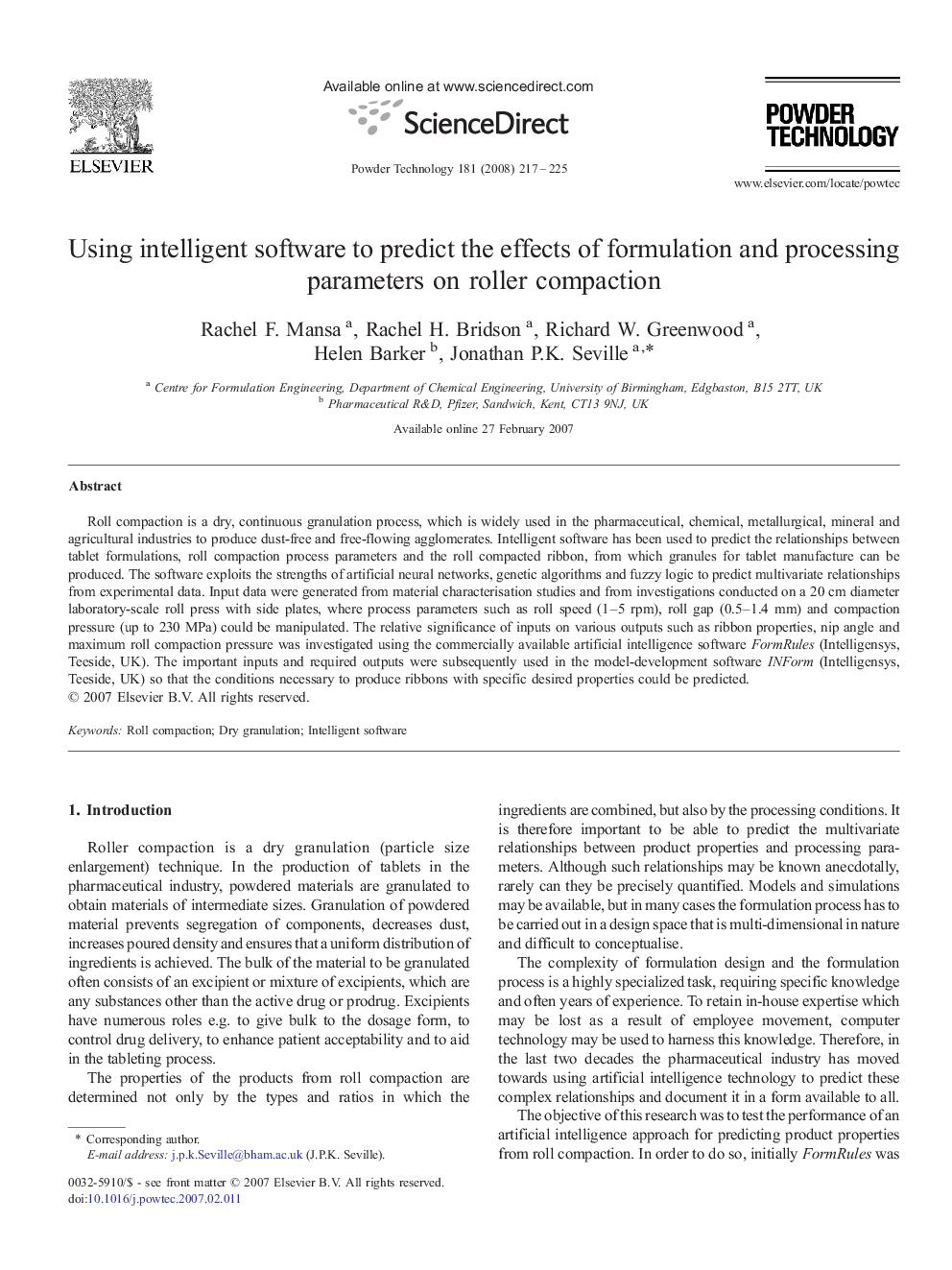| Article ID | Journal | Published Year | Pages | File Type |
|---|---|---|---|---|
| 238923 | Powder Technology | 2008 | 9 Pages |
Roll compaction is a dry, continuous granulation process, which is widely used in the pharmaceutical, chemical, metallurgical, mineral and agricultural industries to produce dust-free and free-flowing agglomerates. Intelligent software has been used to predict the relationships between tablet formulations, roll compaction process parameters and the roll compacted ribbon, from which granules for tablet manufacture can be produced. The software exploits the strengths of artificial neural networks, genetic algorithms and fuzzy logic to predict multivariate relationships from experimental data. Input data were generated from material characterisation studies and from investigations conducted on a 20 cm diameter laboratory-scale roll press with side plates, where process parameters such as roll speed (1–5 rpm), roll gap (0.5–1.4 mm) and compaction pressure (up to 230 MPa) could be manipulated. The relative significance of inputs on various outputs such as ribbon properties, nip angle and maximum roll compaction pressure was investigated using the commercially available artificial intelligence software FormRules (Intelligensys, Teeside, UK). The important inputs and required outputs were subsequently used in the model-development software INForm (Intelligensys, Teeside, UK) so that the conditions necessary to produce ribbons with specific desired properties could be predicted.
Graphical abstractIntelligent software has been used to predict the relationships between tablet formulations, roll compaction process parameters and roll compacted ribbons. The influence of material characteristics and process conditions on ribbon properties, nip angle and maximum roll compaction pressure was investigated using the artificial intelligence software FormRules. The important inputs and required outputs were subsequently used in the model-development software INForm so that the conditions necessary to produce ribbons with specific properties could be predicted.Figure optionsDownload full-size imageDownload as PowerPoint slide
